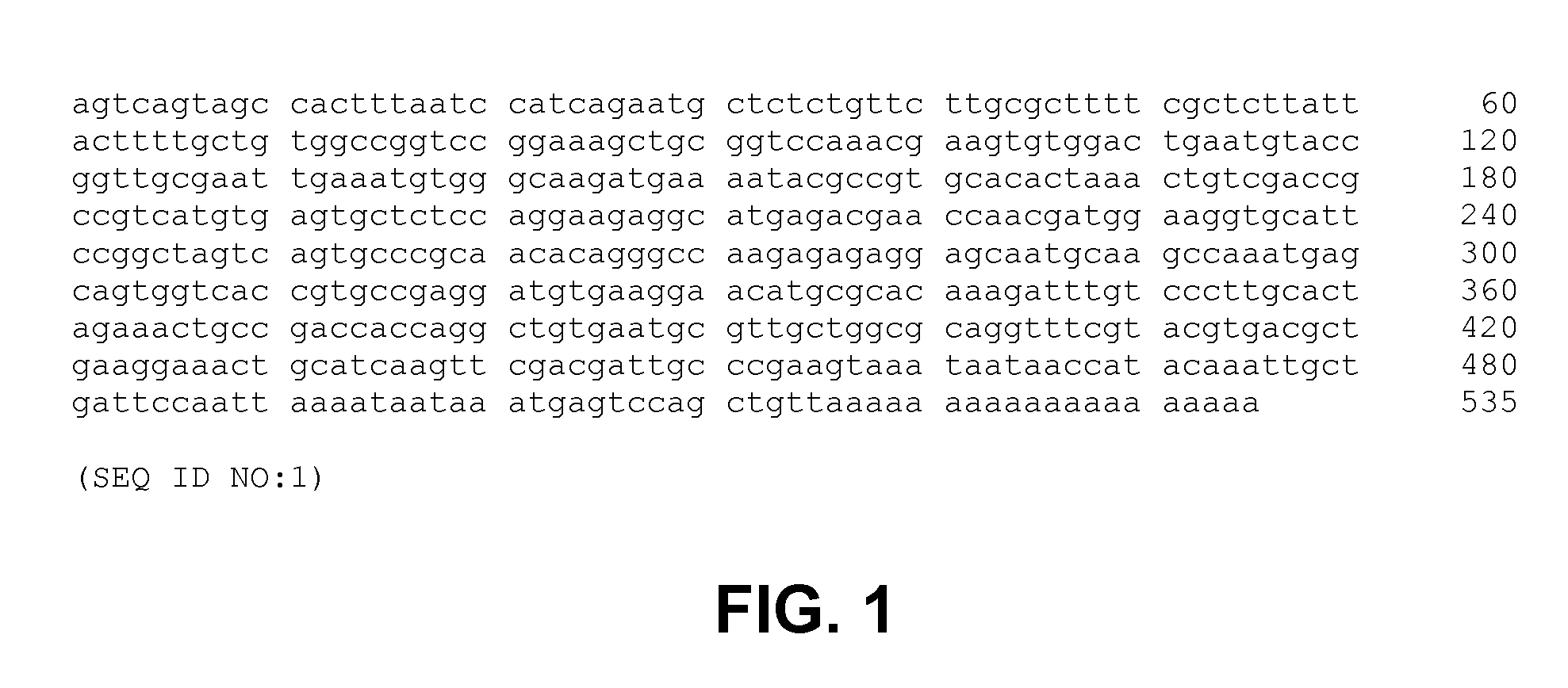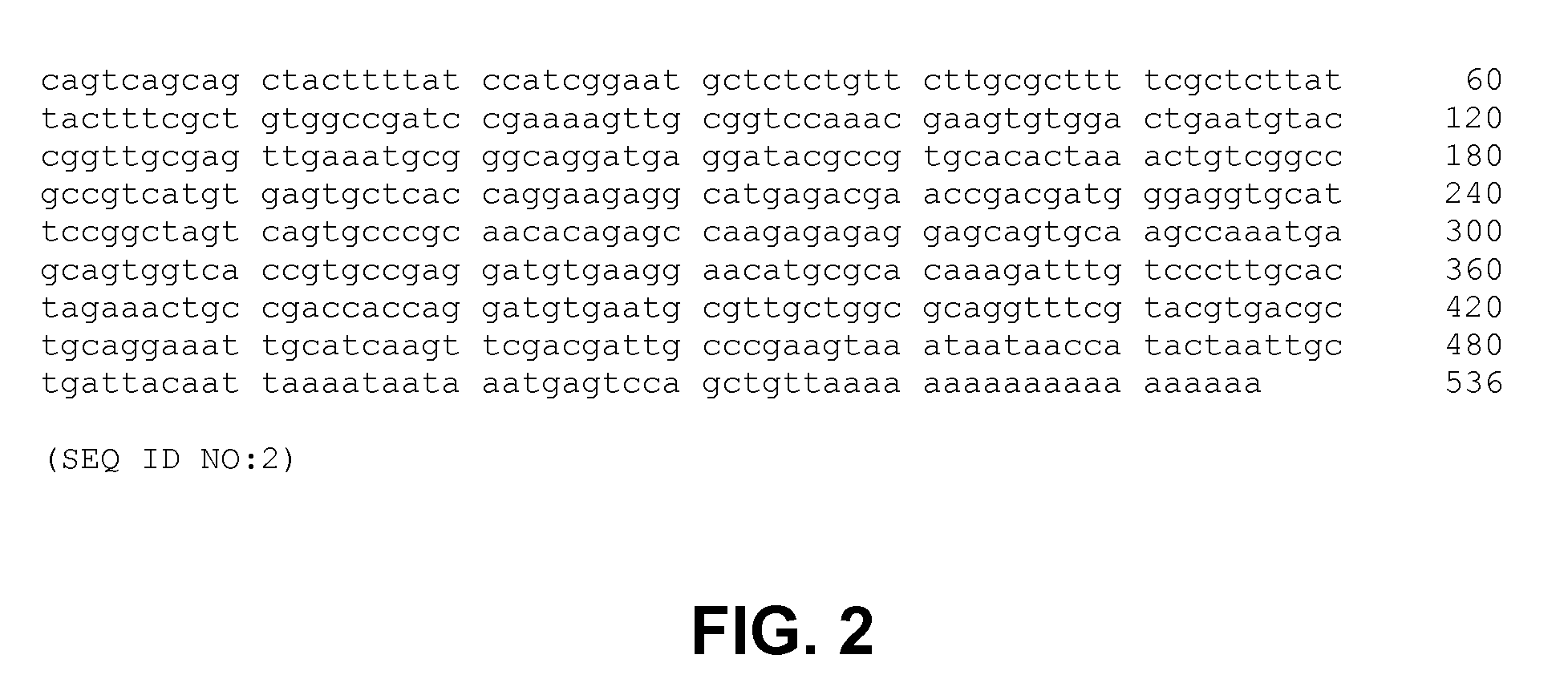Methods, Devices, Kits and Compositions for Detecting Roundworm
a technology of roundworm and detection method, applied in the field of mammals detection methods, devices, kits and compositions, can solve the problems of time-consuming microscopic methods, serious disease and even death, and significantly more difficult to identify roundworms, specifically causative worms
- Summary
- Abstract
- Description
- Claims
- Application Information
AI Technical Summary
Benefits of technology
Problems solved by technology
Method used
Image
Examples
example 1
[0136]Anti-DIV6728 pAB specifically binds roundworm coproantigen, but does not specifically bind coproantigen from either hookworm, whipworm or heartworm.
[0137]It was a goal of Example 1 to determine whether anti-DIV6728 pAB specifically binds coproantigen of roundworm in canines. Measured OD values for pooled canine fecal extracts are shown in FIG. 7. Specifically, these fecal extracts were derived from fecal samples obtained from five canine animals known to be infected with roundworm (“Roundworm-infected”), two canine animals known to be infected with hookworm (“Hookworm-infected”), and five canine animals known to be infected with whipworm (“Whipworm-infected”). Additionally, OD values were also measured for whole Toxocara canis extract (“Whole Toxocara”; 1 μg / ml), which served as positive control, and for a pooled sample of fecal extracts obtained from five canines known to be free of parasitic worm infection (“Uninfected”) and for a sample that did not contain any fecal extrac...
example 2
[0143]When tested by ELISA in a microtiter dish format, anti-DIV6728 pAB specifically binds roundworm coproantigen, but does not specifically bind coproantigen from either hookworm, whipworm or heartworm, and specific binding of roundworm coproantigen by anti-DIV6728 pAB produces a calorimetric change that is readily observable to the human eye.
[0144]It was a goal of Example 2 to determine whether specific binding between anti-DIV6728 pAB and roundworm coproantigen while the anti-DIV6728 pAB is immobilized on a solid support can produce a calorimetric change that is observable to the human eye.
[0145]Referring to FIG. 9, anti-DIV6728 pAB (3 μg / ml) was immobilized onto the bottom surfaces of wells A1-A12 and B1-B12 of a microtiter plate as described before. Following such immobilization, the A3 and B3 wells were exposed to fecal extract from a heartworm-infected canine (indicated by “HW” in FIG. 9). The A4 and B4 wells were exposed to fecal extract from a first hookworm-infected canin...
example 3
[0148]When tested by ELISA in a lateral flow format, anti-DIV6728 pAB specifically binds roundworm coproantigen and this specific binding of roundworm coproantigen by anti-DIV6728 pAB produces a calorimetric change that is readily observable to the human eye.
[0149]It was a goal of Example 3 to determine whether anti-DIV6728 pAB can be used to capture and detect roundworm coproantigen in a lateral flow ELISA. The lateral flow format that was used was a SNAP® assay device, similar to that which is described in U.S. Pat. No. 5,726,010. Further, the assay was performed generally as described in that same patent. Briefly, among other components, the SNAP® assay device included a sample entry cup, a flow matrix, a sample prefilter pad for removing interfering particulate matter, a specific binding reagent pad, a reactive zone, and an absorbent reservoir. Anti-DIV6728 pAB was immobilized in the form of a small, round spot at the reactive zone by drying (this bound anti-DIV6728 pAB is refer...
PUM
| Property | Measurement | Unit |
|---|---|---|
| temperature | aaaaa | aaaaa |
| OD | aaaaa | aaaaa |
| OD | aaaaa | aaaaa |
Abstract
Description
Claims
Application Information
 Login to View More
Login to View More - R&D
- Intellectual Property
- Life Sciences
- Materials
- Tech Scout
- Unparalleled Data Quality
- Higher Quality Content
- 60% Fewer Hallucinations
Browse by: Latest US Patents, China's latest patents, Technical Efficacy Thesaurus, Application Domain, Technology Topic, Popular Technical Reports.
© 2025 PatSnap. All rights reserved.Legal|Privacy policy|Modern Slavery Act Transparency Statement|Sitemap|About US| Contact US: help@patsnap.com



